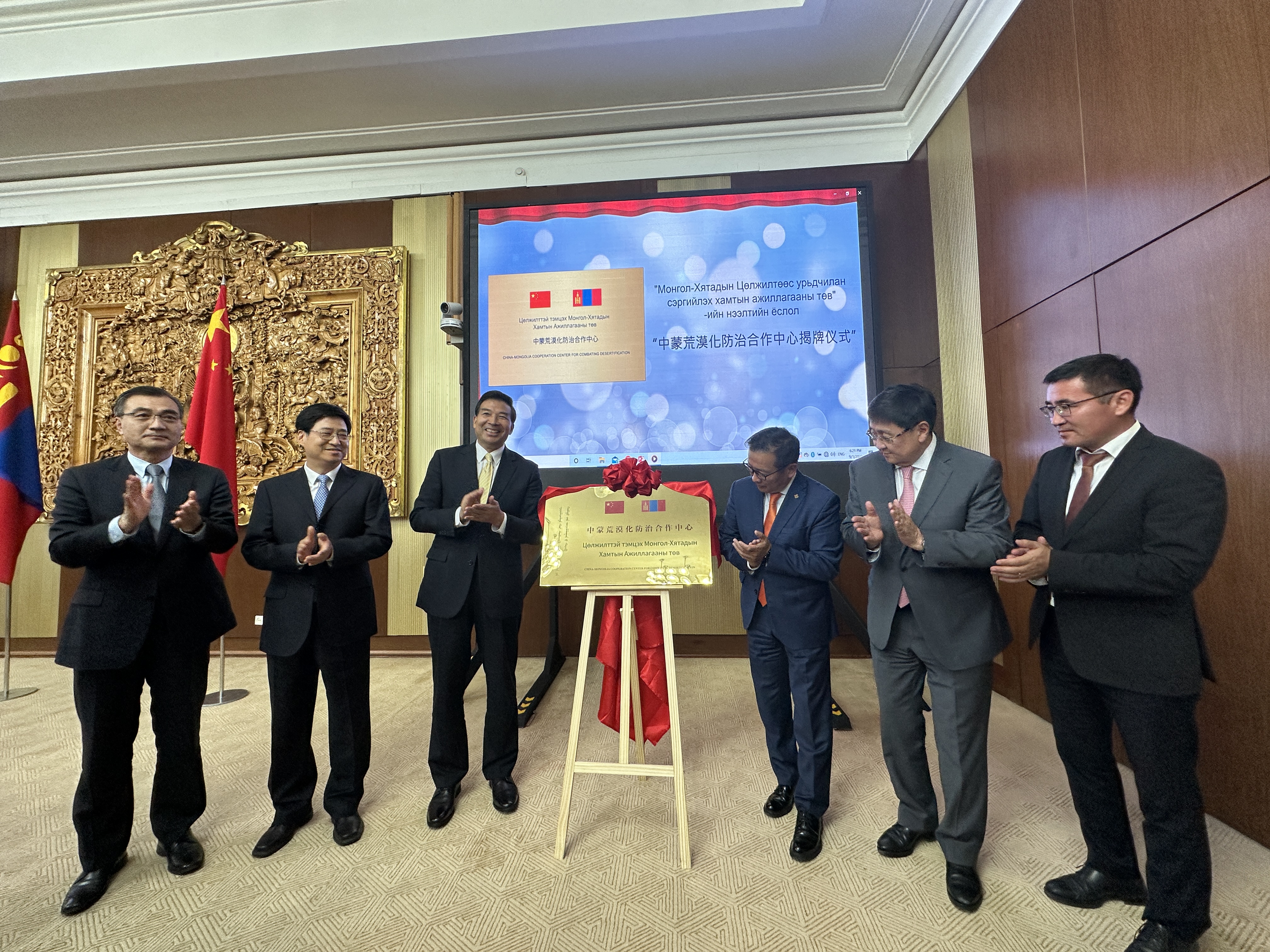
By MA Aiping & LIANG Yilian
The China-Mongolia Desertification Prevention and Control Cooperation Center, inaugurated in Ulaanbaatar, Mongolia on September 1, is part of China’s support for Mongolia's "Billion Trees" campaign.
A key platform for China and Mongolia’s cooperation in desertification prevention and control, the center is supported by the development cooperation and forestry authorities of both countries.
China will assist constructing ecological protection and restoration demonstration areas in Mongolia, employing advanced Chinese technologies in afforestation and desertification prevention and control. Monitoring stations will be established in the Gobi Desert and cooperation in sandstorm monitoring and early warning will be strengthened.
China and Mongolia will also carry out a series of joint research and capacity-building activities to mitigate the damage caused by dust events in Northeast Asia and construct an ecological security barrier in the Mongolian Plateau.
The bilateral cooperation to fight desertification began years ago. The Division of Desertification Study Institute of Geography and Geoecology of the Mongolian Academy of Sciences (MAS) has a major role in deepening cooperation on fighting desertification, and working out scientific projects in cooperation with Chinese research institutions and universities, according to People’s Daily.
From 2017 to 2019, the institute worked with the Northwest Institute of Eco-Environment and Resources of the Chinese Academy of Sciences (CAS) on a project on key techniques for sand dune stabilization and vegetation recovery in the typical regions of the countries along the Silk Road Economic Belt.
From 2018 to 2020, in cooperation with the Inner Mongolia Normal University and the agricultural and livestock products processing institute of Inner Mongolia, MAS worked on a project to apply remote sensing monitoring and repair technology to a degraded grassland demonstration in Mongolia.
Also, in 2022, with the Institute of Geography and Natural Resources of CAS, Mongolian researchers worked on a project to plant trees and shrubs to stabilize the movement of sand.
The China-Mongolia Desertification Prevention and Control Cooperation Center is an example of nations coming together to combat a shared environmental challenge and strengthen friendship and cooperation.
The trio will conduct a series of experiments in fields such as life science, fluid physics, combustion science and materials science. Notably, this is the first time that fruit flies have been taken on a Chinese space mission as experimental subjects. What made scientists choose fruit flies? What experiment will they undergo?